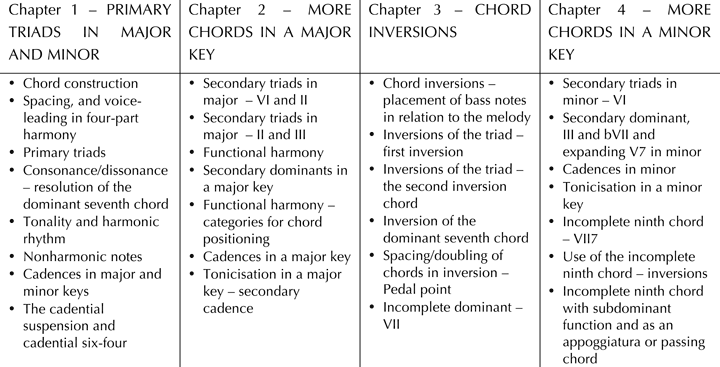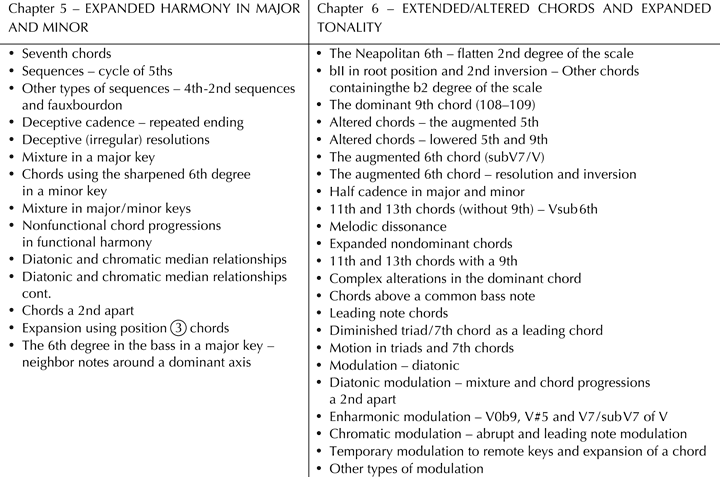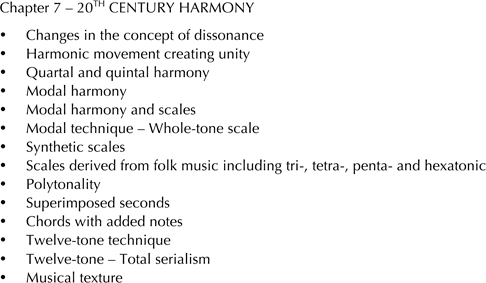Sten Ingelf, Learn from the Masters: Classical Harmony, Hjärup (Sweden): Sting Music 2010
Stefan Eckert
Sten Ingelf’s music theory textbook Learn from the Master: Classical Harmony aims at “beginners, or those who have some basic knowledge in harmony and prefer the do-it-yourself approach [and] music students at secondary and tertiary level, where the book can be used as the principal textbook in the subject of harmony” (5). Its purpose is to provide “training in ‘classical’ harmony,” emphasizing harmonic analysis and harmonization “a topic which,” according to Ingelf, “is rarely found in traditional harmony textbooks” (5). Ingelf’s central tenet is to provide a practical approach to the study of harmony. “This,” he asserts, “occurs by harmonizing and then analyzing practice examples from the music literature. In this way, [readers] will have an aural experience of each new topic. This is in contrast to the traditional way of reading a score, which is then analysed without an aural experience” (5).
Reading a basic harmony textbook such as Learn from the Masters is very much like reading a basic cookbook. Such a cookbook usually contains no great revelations, but rather basic instructions to basic dishes. At times, there are instructions that seem to complicate a simple dish unnecessarily, but I read cookbooks for finding simpler instructions for the dishes that I consider to be difficult or complicated. Even though there are numerous cookbooks available – with older or out-of-print books often available for free online – there are still new ones published and I continue to be interested in reading them, because there is always the possibility that I can learn something new or improve something I thought I knew well.
Learn from the Masters contains the material – basic diatonic and chromatic harmony and some twentieth-century topics – which I would expect to find in a theory textbook, it covers these topics generally in an acceptable and recognizable manner, and does not contain revelatory information. While I support its opening claim, there exist a large number of English-language music theory textbooks that cover both analysis and harmonization using examples from the literature; thus Ingelf’s statement that other textbooks do not provide such engagement with the literature seems at odds with current practice. Similarly, I am not aware of any recent theory textbooks that would support analyzing a score without recourse to its sound. Indeed, Ingelf seems to have written Learn from the Masters from a pedagogical standpoint that does not reflect current practices in English-language music theory textbooks; however, it may well be that his criticism resonates with readers who are privy to his pedagogical practice.
The book covers the material in seven chapters, “Chapter 1 – Primary Triads in Major and Minor,” “Chapter 2 – More Chords in a Major Key,” “Chapter 3 – Chords Inversions,” “Chapter 4 – More Chords in a Minor Key,” “Chapter 5 – Expanded in Harmony Major and Minor,” “Chapter 6 – Extended/Altered Chords and Expanded Tonality,” and “Chapter 7 – 20th Century Harmony.” These chapters are followed by a short section “Voice-leading rules throughout history,” and an “Appendix” of about 30 pages covering a wide range of topics such as “Universal and stylistically bound principles,” “Figured bass,” “The theory of functions,” “Schenkerian analysis,” “Harmonic reduction,” “Alternate doubling,” “The intervals between melody and bass,” “Chord symbols,” “Roman numerals,” and “Intervals and scales.” In addition the textbook comes with a DVD, which contains a 193-page workbook and sound files for many examples and exercises. Finally, it is important to know that “most of the book is designed in a way that each double page deals with a particular topic” (6).
My review will broadly follow the outline of Learn from the Masters and consider its content in three sections, focusing first on Chapters 1–4 which covers diatonic harmony of the major and minor keys, then Chapters 5–6 which discusses altered and extended harmony and expanded tonality, and lastly Chapter 7 which is dedicated to 20th-century music, including a short overview of the appendix.
The first four chapters of Learn from the Masters provide an introduction to diatonic harmony including secondary dominants. Figure 1 summarizes the topics covered in these chapters:
Figure 1: Topics Overview Chapters 1–4
Dividing the diatonic chords into primary (I, IV, and V) and secondary chords (II, III, and VI) and considering the VII as a V7 without a root, the author exemplifies how these chords function within diatonic progressions and conveys a meaningful idea of their use within tonal syntax. The accompanying workbook pages provide a substantial body of examples asking students to move from identifying and notating isolated chords or aspects of a melody to tonal progression and harmonization. While these first four chapters do a commendable job in communicating the basic information, limited explanations, unclear use of terminology, and problematic theoretical concepts introduce unnecessary complications. I will briefly exemplify these issues below.
Learn from the Masters does not cover rudimentary topics such as pitch notation, scales, keys, and intervals; although the Appendix (216–217) contains examples of intervals and scales, it does not contain any explanations of these basics. This is unusual for an English-language theory textbook and it limits the possible use the textbook to more advanced students. One would, however, expect that a textbook contains sufficient explanations of the topics that it covers and I was surprised by the fact that the author leaves out or postpones important basic information. For example, in the section on “Triadic harmony” (10) which shows the four different triads resulting from the combinations of major and minor thirds on a staff, the author does not explain or identify the differences between major, minor, augmented and diminished triads. While Examples 3 and 4 on the opposite page (11) define major and minor triads as a major third and a fifth and minor third and a fifth respectively, the other two triad qualities are not mentioned. In the context of tonic-dominant progressions the author simply states that “The stable chord is called the tonic, while the chord of tension is called the dominant” (14), without explaining why. Similarly, in his discussion of the resolution of the V7, Ingelf states, “it is necessary, to pay attention to both leading notes, the third and the seventh, both of which are pulled towards their natural notes of resolution” (16) and on the facing example page (17), Example 3 contains the annotations, “the third resolves up to the tonic” and “the seventh resolves down to the third,” without a rational or explanation for why this constitutes the “natural notes of resolution.” Only several pages later do we find out that “the melodic movement from the leading note (7th degree) to the 1st degree of the scale creates a strong conclusion” (22), yet without pointing out that this leading tone resolution can explain the resolution of the third mentioned earlier. Such incomplete presentations may point to a weakness of the two-page design, which might not provide enough space for detailed explanations, or to the fact that the author assumes a readership with far more substantial training than most comparable English-language theory textbooks assume.
The author’s use of the concepts “extension” and “substitution” in the context of the V7 chord constitutes an example of unclear use of terminology; this is especially problematic because these two concepts provide the foundation for the author’s construction of diatonic relationships. In the section “Secondary triads in major” (28–31), Ingelf argues that secondary triads “have two notes in common with their respective primary triads, and have a relative relationship with them” (28). As a result, “VI and II often function as substitute chords for I and IV respectively, because the harmonic treatment is similar due to the two notes in common” (28). However, Ingelf uses the same argument in the section “Expansion of V7 to II–V7” (30). Here, he states that the V7 “can be replaced by the formula II–V7 (or IV–V7) with a view to an increase of the harmonic rhythm, because these have two notes in common – the 2nd and 4th degrees” (30). And he continues, “[t]he technique above [that is the expansion of V7 to II–V7 (or IV–V7)] combined with variations of I to I–VI means that two chords can be expanded to four. The notes in common between I and VI (the 1st and 3rd degrees), as well as II and V7, (the 2nd and 4th degrees) pave the way for variations…” (30). While I have neither a problem with explaining the close relationship of third-related chords on the basis of them sharing two pitches, nor with the concept of expanding the V7, Ingelf’s approach strikes me as problematic because it conflates substitutions and expansion in a way that is counterproductive to a students understanding of harmony. Aligning II and V7 solely based on their two shared pitches not only undermines Ingelf’s own harmonic system of I, IV, and V as primary triads, but it conflicts with his own discussion of position ➂ chords (38–39). That is, the IV, II, and V/V chords, which as pre-dominant chords precede the V and I chords on position ➁ and ➀ in a cadence respectively.
Finally, I consider the author’s concept of a “secondary cadence” problematic because it obscures one of the central tenets of tonal harmony, namely the distinction between being-in a key which is affirmed by a cadence and a cadential progression which may or may not involve a tonicization. A cadence as a harmonic and melodic close signals or acknowledges a key, may that be the main key or a temporary one. However, according to Ingelf, “[a] secondary dominant followed by a temporary tonic together form a secondary cadence. The effect of the temporary tonic can be strengthened if it is preceded by II–V or IV–V in the temporary key” (40). Ingelf’s concept of secondary cadence – both in its definition and the given examples – renames what is generally called a tonicization and may not achieve anything further than creating a problematic theoretical concept by way of terminological confusions.
Figure 2 summarizes the content of chapters 5 and 6, which focus on expanded tonality by way of extended/altered chords:
Figure 2: Topics Overview Chapters 5–6
The topics covered in chapters 5 and 6 largely fall into the realm of nineteenth century harmonic language. It thus seems surprising that chapter 5, which covers topics such as mixture chords and diatonic and chromatic mediant relationships, also includes topics that we usually would associate with basic diatonic issues, like non-diatonic seventh chords, sequences, and deceptive cadences. Similarly, chapter 6, which covers the remaining chromatically altered chords, contains a section on half cadences and melodic dissonances. While the rationale for not covering these basic diatonic topics in earlier chapters is not quite apparent and the organization of chapters 5 and 6 – with the exception of the last six sections which all focus on modulation – seems far less cohesive than the first four chapters, the wealth of harmonic material and approaches easily makes up for the lack of organization. I appreciate especially how Ingelf throughout his discussion emphasizes voice leading as a possible cause for a particular sonority and addresses resulting harmonic ambiguity. For the latter, the author uses double identifications to highlight how the same sonority may be interpreted in different ways depending on the perspective. The accompanying workbook chapters similarly offer both focused and specific exercises for individual topics as well as more challenging and comprehensive ones.
Learn from the Masters presents a wide array of 20th-century topics as summarized in Figure 3:
Figure 3: Topics Overview of Chapter 7
Ingelf begins Chapter 7 by discussing “Changes in the concept of dissonance” which includes the section “The amount of tension in an interval.” In this chapter, the author classifies intervallic tension on a scale of “increasing tension,” from open/empty (unison, octave, and perfect fifth), to soft/full (sixth and third), mild (perfect fourth, minor seventh and major second), to tensions (tritone), and extreme tension (major seventh and minor second). This classification seems obvious, but I was intrigued by the author’s use of this scale in classifying chords. “It is possible,” Ingelf argues “to understand the amount of tension by studying the relationship between the intervals in a chord” (152). Although Ingelf did not really explore this idea further, the twentieth-century material is organized along the lines of increasing intervallic tension, beginning with the open sonorities of the quartal and quintal harmony and ending with a brief discussion of Twelve-tone technique. The chapter touches on most twentieth-century pitch techniques, yet one of the most prominent post-tonal pitch theories, namely pitch class set theory, is only briefly summarized in the appendix (198–199). This is disappointing, but considering that twentieth-century harmony makes up only a small portion of Learn from the Masters, it is not particularly surprising.
Finally, the appendices, which are divided into “Voice-leading rules throughout history” (181–187) and a multi-topic “Appendix” (188–217) are noteworthy both for their length and their aspiration. The section on “Voice-leading rules throughout history” claims to “elucidate the historic perspective of the successive changes that occurred regarding voice leading principles.” Ingelf promises that, “this description will also shed light on traditional harmony which has been taught for several hundred years” (181). However, it turns out that the section is far less ambitious and wide-ranging than its title initially suggests. Focusing first on “Melodic Intervals,” Ingelf starts his discussion with Palestrina’s use of melodic intervals, which not only avoids augmented and diminished intervals, but also major 6ths, any 7ths, and descending minor 6ths. Ingelf then goes on to demonstrate that there are exceptions to every voice leading rule dedicating sections to “Leading note resolution,” “Crossing parts,” “Cross relation,” “All parts in similar motion,” “Parallel octaves and unisons,” “Parallel fifths,” “Perfects 5th–diminished 5th and vice versa,” “Other types of consecutives,” and “Hidden fifths and octaves.” I do not want to defend mechanical rules for their own sake, but I feel that the author is disingenuous in his discussion, because I am not aware of any harmony book that would consider such voice-leading rules as absolute as Ingelf suggests throughout his discussion. Indeed, most English-language music theory textbooks include examples that demonstrate apparent violations within the discussion of specifics of voice-leading rules. Many even make a strong case that much of the supposed rules are merely suggestions, and that all rules have to be applied within a particular musical context. The remainder of the appendix appears to consist of an almost random set of information, most prominently the section entitled “Universal and stylistically bound principles,” which the author conceived as a summary of harmonic rules. It is questionable how useful the brief sections on “Pitch class and interval class,” “Schenkerian analysis,” and “Harmonic function” are, since they do not provide much more than a cursory glance on the respective topics. In contrast, I welcome the pages on “Chord symbols (212–213) and “Roman numerals” (214–215) as a way for keeping up with the author terminology, something which I would assume most readers will appreciate.
* * *
Sten Ingelf, who according to the back-cover is a professor of music theory at Malmö Academy of Music, Lund University, is clearly an accomplished theory teacher and there is much to admire in Learn from the Masters. Providing a general overview of harmony useful for musicians who want to review traditional harmony, do not require step-by-step explanations, and are able to deal with a certain amount of terminological features, the textbook is probably easiest to maneuver with an experienced teacher, who can help students over the more idiosyncratic sections of the text and provide additional information. While Learn from the Masters claims a unique and practical approach to the repertoire highlighting analysis and harmonization, it is not unlike most English-language music theory textbooks currently in print. However, it lives up to its own demands, as both the textbook and the workbook contain a substantial body of examples taken from the literature, in addition the included DVD provides sound examples for the majority of the examples contained in the textbook and some from the workbook. Considering that Learn from the Masters is accompanied by an impressive array of supporting features – the accompanying DVD contains (1) a pdf of a 193-page workbook (both in A4 and US letter format), (2) 255 recorded music examples for the textbook; (3) 36 recorded music examples for the workbook; and (4) 28 notated workbook examples both in Finale 2009 files and MusicXML files –, I would encourage everyone to take a closer look at this basic music theory textbook.
Dieser Text erscheint im Open Access und ist lizenziert unter einer Creative Commons Namensnennung 4.0 International Lizenz.
This is an open access article licensed under a Creative Commons Attribution 4.0 International License.


